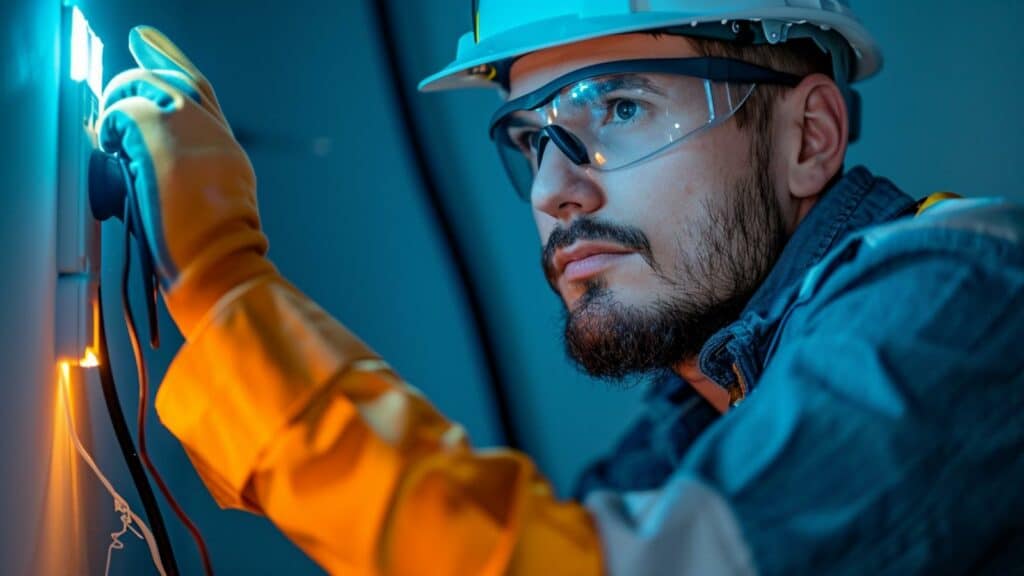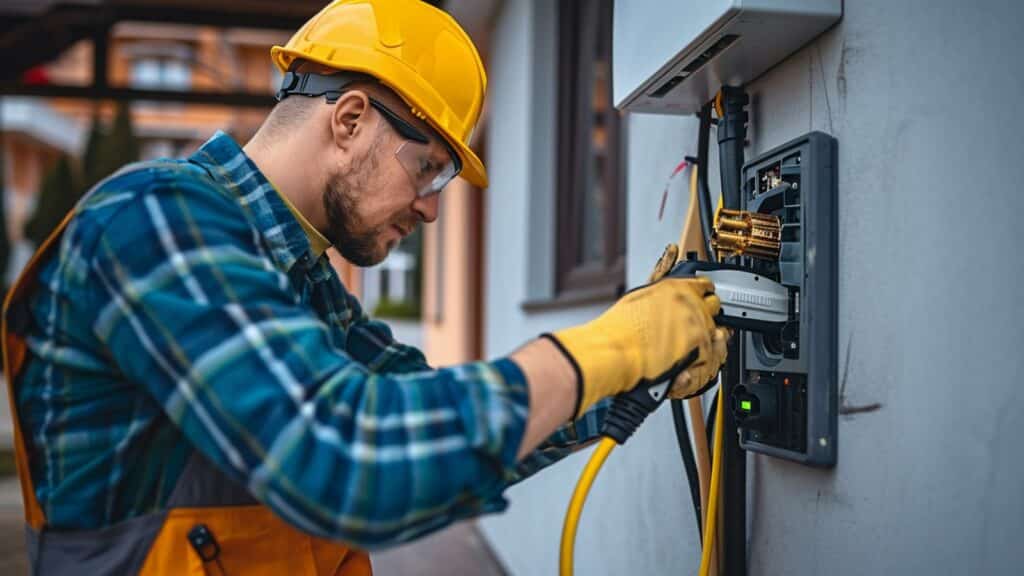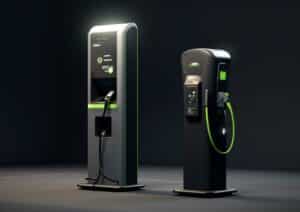As the world grapples with the urgent need to address climate change and curtail greenhouse gas emissions, it is crucial to understand what electrification is and its implications for the energy sector. Energy professionals are transforming the renewable energy landscape. The transition to electrification is a linchpin in adopting clean energy across various sectors, including transportation, industrial processes, and residential and commercial buildings.
At its essence, electrification signifies a systemic shift towards clean energy utilization vital for a sustainable future. The electrification movement is gathering pace, with electricity’s share of the total energy consumption projected to rise from 19% in 2020 to 30% by 2040, according to a report by BloombergNEF. In the transport sector, this transition is evidenced by the surge in electric vehicle (EV) adoption—the International Energy Agency (IEA) reports a record 10 million EVs on the road globally in 2022, up from just 1 million in 2016.
The increase in renewable energy sources further emphasizes this profound shift toward electrification. In 2023, renewables accounted for nearly 30% of the total global electricity generation, as stated by the Renewable Energy Policy Network for the 21st Century (REN21). Yet, to fully actualize the potential of electrification, professionals must develop a deep understanding of navigating this intricate and rapidly advancing field.

Defining Electrification
Electrification is transitioning from traditional energy sources, such as fossil fuels like natural gas, to using electricity as the primary energy source. This shift towards electrification is driven by various factors, including the need to reduce greenhouse gas emissions and combat climate change. Building electrification encompasses converting multiple aspects of our daily lives, such as heating and transportation, to electric power.
One significant area of electrification is vehicle electrification, which involves adopting electric vehicles (EVs) to replace conventional combustion engine vehicles. This transition from fossil fuel-powered vehicles to electrified vehicles not only reduces carbon emissions and air pollution but also promotes the use of clean electricity.
Similarly, building electrification includes installing electric appliances like heat pumps, water heaters, and solar panels, which reduce carbon dioxide emissions and provide energy efficiency, lowering energy costs. In the industrial sector, electrification enables using electric heat pumps and heating for various processes, reducing energy consumption and carbon emissions.
Examples of Electrification in our Life: Driving the Transition to a Sustainable Future
As energy professionals, understanding the practical applications of electrification is vital in navigating the ongoing energy transition. By exploring real-world examples, we can grasp the transformative potential of renewable energy sources and their impact on various aspects of our lives.
Electric Vehicles (EVs) Transportation Leading the Charge
Electric vehicles (EVs) are crucial in the overall electrification movement. As the transportation sector accounts for a significant portion of global greenhouse gas (GHG) emissions and relies heavily on fossil fuels, transitioning to electric vehicles offers a promising solution to mitigate the adverse effects of climate change. By replacing fossil-fueled cars with electric vehicles, carbon emissions, and air pollutants can be significantly reduced, improving air quality and addressing the urgent issue of climate change.
According to the International Energy Agency (IEA), global sales of EVs more than doubled in 2021, surpassing expectations with an impressive sales increase. Electric car sales more than doubled from the previous year, reaching 6.6 million units and representing nearly 9% of the global car market.
To support the widespread adoption of vehicle electrification, a critical aspect is the development of a robust charging infrastructure. Energy professionals are actively involved in building electrification and constructing charging networks that are both convenient and accessible.
Building Electrification & Transforming the Way We Heat and Cool
Building electrification refers to transitioning buildings from fossil fuel-powered systems to electric systems, which includes using electric vehicles, heat pumps, electric appliances, and renewable energy sources. Technological advancements facilitate this shift and aim to reduce carbon emissions, improve energy efficiency, and mitigate climate change.
One of the key components of building electrification is the adoption of heat pumps for heating and cooling purposes. Heat pumps use electricity to extract heat from the outside air or ground and transfer it indoors during the winter, providing efficient heating. In the summer, they remove heat from the indoors, offering cooling capabilities. Heat pumps reduce energy consumption and greenhouse gas emissions and improve indoor air quality by utilizing electricity instead of natural gas or oil.
Building electrification requires collaboration and expertise from energy professionals who can assess energy demand, integrate renewable energy sources into the electric grid, and ensure grid stability. They are crucial in managing the energy transition process and optimizing energy consumption.
Empowering the Energy System of the Future With Grid Modernization
Electric grid modernization is critical to electrification as it seeks to transform and empower future energy generation. With the increased adoption of electric vehicles and heating and cooling systems, a greater electricity demand necessitates an upgraded grid infrastructure. This modernization process involves the integration of various smart grid technologies, such as advanced metering, energy storage systems, and demand response mechanisms, to manage energy demand efficiently.
Collaboration among electric utilities, policymakers, and electrical contractors is essential to achieve electric grid modernization. Utility managers are responsible for implementing pilot projects and forging partnerships with technology providers and other stakeholders. Policymakers must create a regulatory environment that incentivizes grid modernization investments and supports the energy transition to renewable sources. Engineers are critical in leveraging data analytics and developing innovative solutions that optimize grid operations and ensure their future readiness.

The Role of Electrification in Energy Transformation
Electrification catalyzes the profound transformation of our energy systems, ushering in a cleaner, more sustainable future. By enabling the integration of renewable energy sources, reducing greenhouse gas emissions, and driving advancements in energy efficiency, demand response, and smart grid technologies, electrification plays three pivotal roles:
Integration of Renewable Energy Sources
One of the core roles of electrification is to facilitate the seamless integration of renewable energy sources into the existing power grid. As the world seeks to reduce reliance on fossil fuels and curb greenhouse gas emissions, renewable energy, such as solar and wind, has emerged as a crucial solution. Beneficial electrification provides a pathway for incorporating these intermittent energy sources into the grid, ensuring a reliable and sustainable electricity supply.
Greenhouse Gas Emission Reduction
A cornerstone benefit of what is electrification involves the significant reduction of greenhouse gas (GHG) emissions, a critical step toward mitigating the impacts of climate change. By shifting away from fossil fuels toward electricity—increasingly generated from renewable sources—industries, homes, and transportation can dramatically lower their carbon footprints.
When powered by renewable energy, EVs can reduce GHG emissions by up to 60% compared to traditional gasoline-powered vehicles, according to the New York Times. This transition is not a forecast for the distant future; it’s happening now. In 2023, a study by the International Council on Clean Transportation (ICCT) estimated that 40% of new car sales could be electric by 2030, potentially reducing CO2 emissions by 1.5 gigatonnes per year, equal to Russia’s total current CO2 emissions.
Advancements in Energy Efficiency and Smart Grid Technologies:
Advancements in energy efficiency and smart grid technologies play a crucial role in the electrification of various sectors, promoting the transition towards a cleaner and more sustainable energy future. By replacing fossil fuel-powered systems with electric alternatives, electrification significantly reduces carbon emissions and mitigates the impacts of climate change. This shift spans different areas, including building electrification, vehicle electrification, and beneficial electrification.
Challenges and Considerations
While electrification offers immense potential for energy transformation, several challenges and considerations must be addressed to ensure its successful implementation. Here are four key areas that require attention:
1. Grid Integration and Infrastructure Requirements
One of the primary challenges of electrification is efficiently integrating increased electricity demand into the existing grid infrastructure. As electrification drives the adoption of electric vehicles, electrified heating and cooling systems, and other energy-intensive technologies, it puts additional strain on the grid.
For instance, research conducted by the Electric Power Research Institute (EPRI) demonstrated a projected increase in electricity demand by up to 29% to 51% above current levels by 2050 due to electrification, particularly with the rise in EVs. This surge necessitates not only the upgrading and expansion of transmission and distribution networks but also the incorporation of smarter grid management systems. Upgrading and expanding transmission and distribution infrastructure become crucial to handle the increased load and ensure grid stability.
Moreover, integrating distributed energy resources, such as rooftop solar panels and local energy storage systems, requires advanced grid management technologies and comprehensive planning. Balancing intermittent renewable energy generation with demand becomes critical to maintaining a reliable and resilient energy system.
2. Affordability and Accessibility
In the context of electrification, it is crucial to address the accessibility of clean energy options and services for marginalized communities. Underserved communities often face energy and transportation inequalities, and without targeted efforts, the energy transition could inadvertently exacerbate these disparities.
Providing affordable electricity and electrified transportation options to these communities will not only help bridge the energy and transportation gap but also improve the overall quality of life and reduce health risks associated with air pollution, as cleaner energy sources contribute to improved indoor and outdoor air quality.

3. Supportive Policies and Regulatory Frameworks
The successful implementation of electrification relies on supportive policies and regulatory frameworks. By providing financial incentives, setting targets, and establishing clear regulations, governments and regulatory bodies can promote the adoption of clean electricity, renewable energy sources, and energy-efficient technologies. These policies drive economic growth and innovation and are crucial in reducing GHG emissions, mitigating climate change, and improving indoor and outdoor air quality.
4. International Cooperation and Collaboration
International cooperation and collaboration play a crucial role in advancing electrification efforts worldwide. This collaboration involves sharing best practices, research, and development to accelerate the adoption of beneficial electrification. With countries’ joint efforts, harmonizing regulatory standards and policies can be achieved, enabling the widespread use of electric vehicles and building electrification.
Furthermore, international collaboration is essential for developing and implementing cross-border infrastructure, such as interconnected grids and energy exchange mechanisms. Collaboration in research and development can lead to advancements in technologies like battery storage, which can improve the stability and resilience of the electric grid.
Conclusion
Understanding electrification is pivotal in navigating the ongoing energy transformation. It offers opportunities for a sustainable, clean energy future by integrating renewable energy sources, advancing energy efficiency, and reducing carbon emissions across sectors. Professionals in the energy industry can play a significant role in contributing to a greener and more efficient energy landscape by embracing and promoting electrification practices.
FAQs (Frequently Asked Questions)
What are the main benefits of electrification?
Electrification offers numerous benefits, such as reduced greenhouse gas emissions, improved air quality, increased energy efficiency, and integration of renewable energy sources. It allows for cleaner transportation options, promotes energy independence, and drives technological innovation for a sustainable future.
How does electrification support the integration of renewable energy sources?
Electrification facilitates the integration of renewable energy sources, such as solar and wind, into the existing power grid. By leveraging clean electricity as a primary energy source, electrification enables the seamless incorporation of intermittent renewable energy generation, reducing reliance on fossil fuels and promoting a more sustainable energy mix.
How does electrification benefit marginalized communities?
Electrification presents an opportunity to address energy and transportation inequalities by providing affordable, accessible, and clean energy options for marginalized communities. By implementing inclusive policies, targeted investments, and infrastructure development, electrification can bridge the energy gap, improve the quality of life, and reduce health risks associated with air pollution in these communities.
How does electrification differ from traditional energy sources?
Traditional energy sources, like fossil fuels, involve the combustion of natural resources to generate energy. On the other hand, electrification utilizes electricity from various sources, including renewable energy, to power multiple functions and devices.







